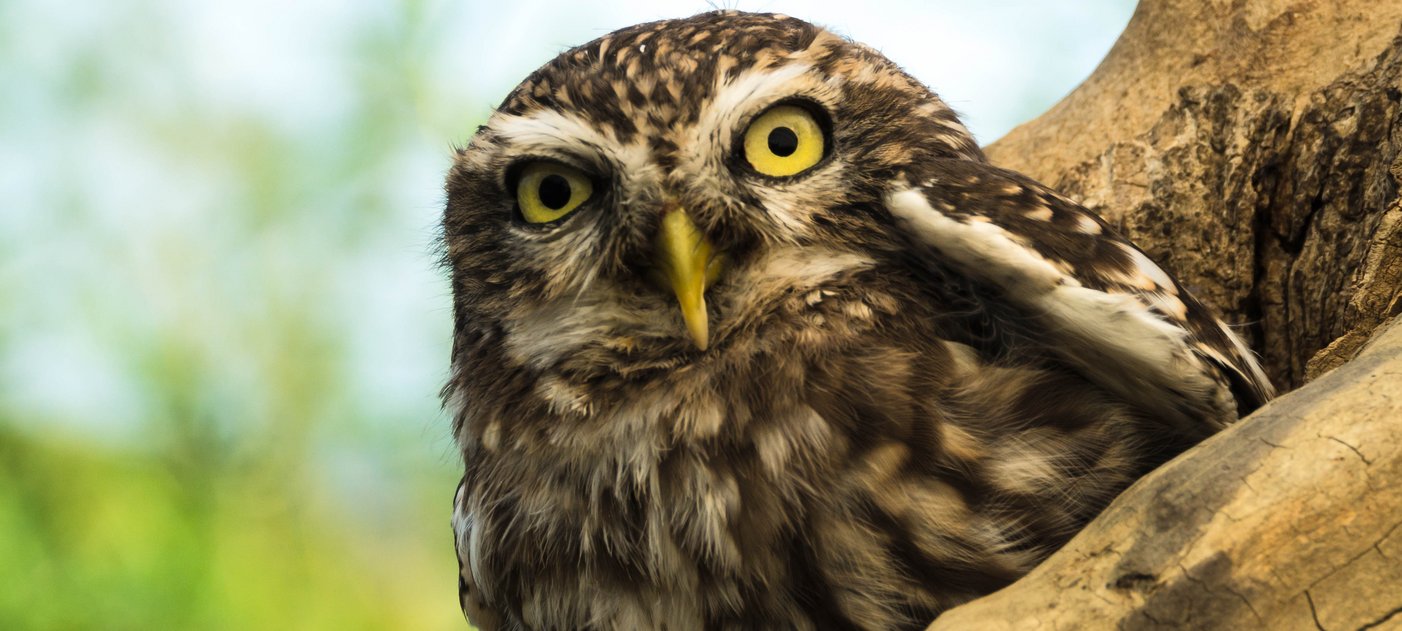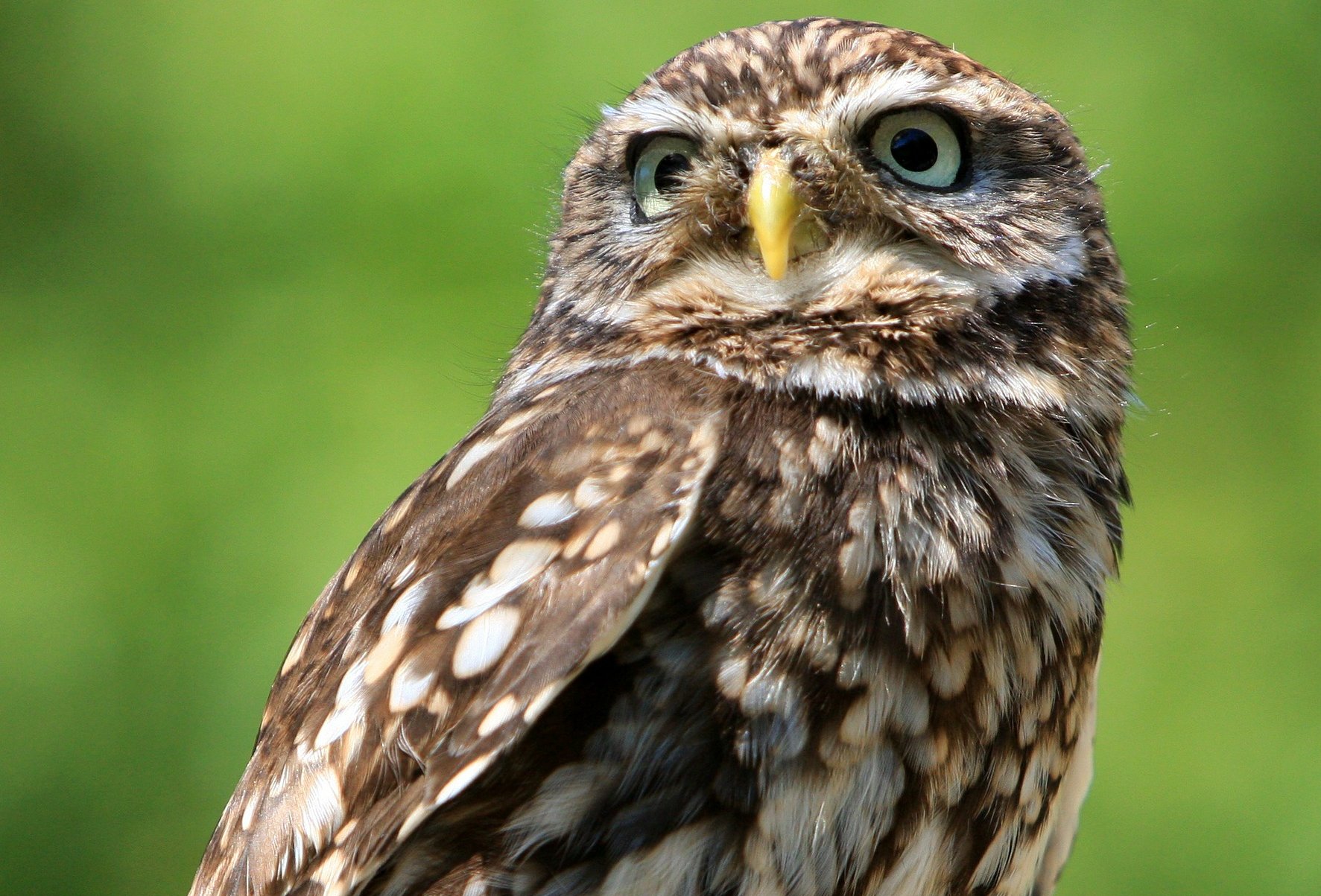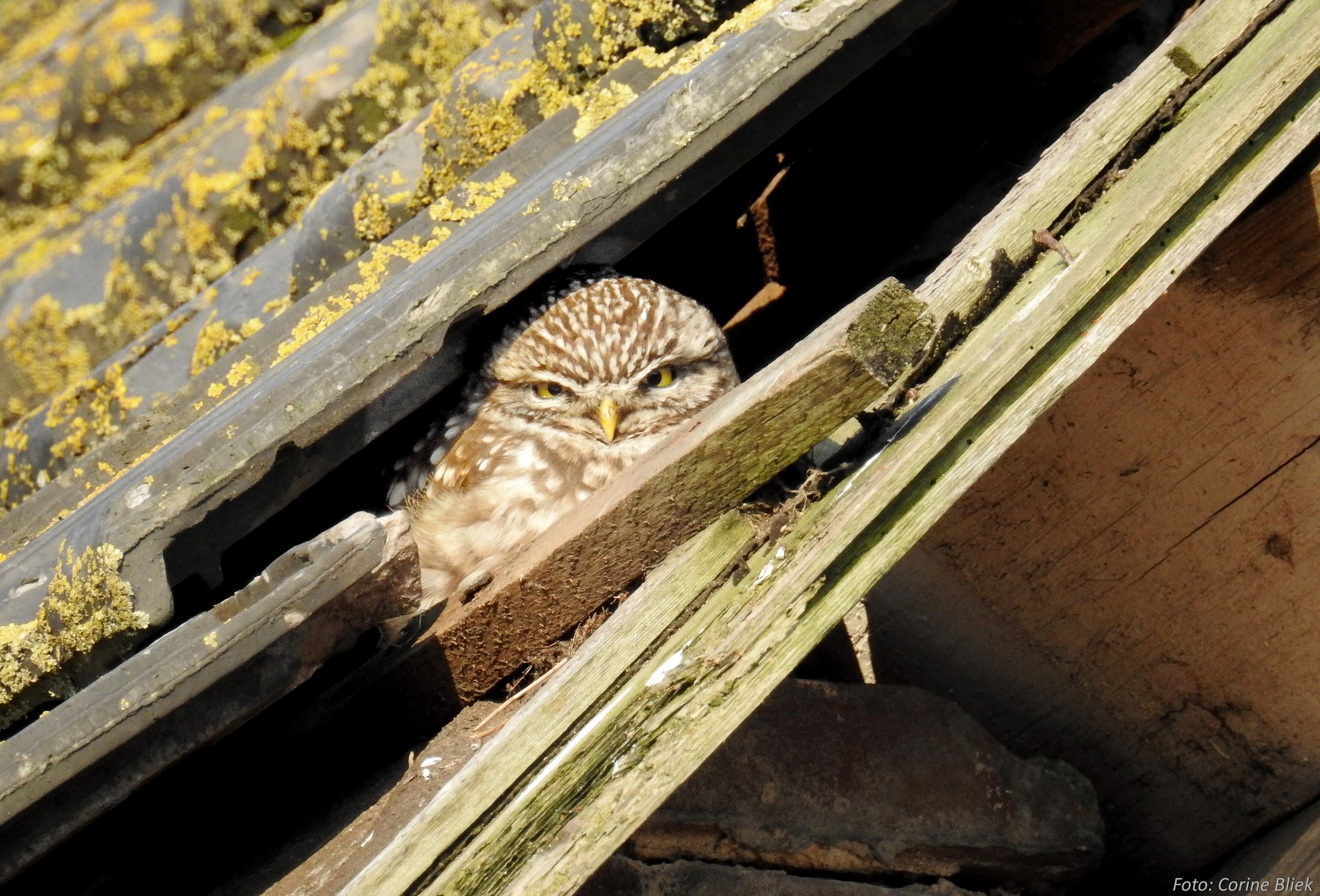Characteristics
- Size: 21 to 23 cm - about the size of a blackbird
- Appearance: Plumage brown apex and upper surface speckled with white long legs, short tail, yellow eyes
- Food: mice, insects, reptiles, amphibians and earthworms
- Breeding sites: tree hollows, building niches, rock walls, stone walls, ground hollows
- Activity: crepuscular and diurnal
Once endemic, today endangered
In Austria the little owl is currently classified as critically endangered on the Red List of Austria's breeding birds. The main cause of the alarming decline in the little owl population is linked to the intensification of agriculture and the lack of breeding grounds in the form of old hollow trees. These not only serve as a nesting place, but also as important daytime hideouts. Intensively used agricultural areas, which characterize the landscape today, only have limited utility as hunting grounds for the little owl. Due to the lack of structures, they can only be used as a breeding area in rare cases.
A new home
As part of the little owl research project, the AOC branch office in Seebarn is analyzing the potential of areas for existing little owls. Taking into account factors that limit the population as well as potential hazards, species protection measures can be implemented sustainably based on the knowledge gained and in cooperation with the locally active association Wagrampur. In the course of this, land managers are making the living space more attractive, and missing structures, such as breeding places, are compensated for, using nesting boxes. This ensures that the existing population can spread naturally and, in the best case scenario, the population numbers will rise again.
We would be grateful for your support in the form of donations for the Little owl project.


